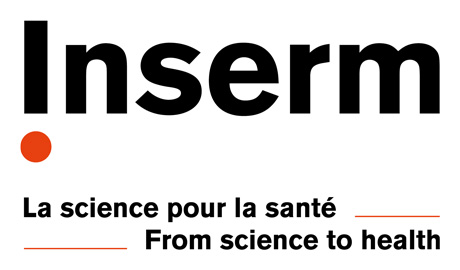





FORMATION Horizon Europe : les clés de la réussite
Mercredi 21 et jeudi 22 janvier 2026
Destinée à tout chercheur travaillant dans des unités Inserm et souhaitant déposer un projet collaboratif avec l'Inserm (Actions Marie Sklodowska-Curie et Cluster Health)
Inscriptions via Sirene jusqu’au 15 décembre 2025
>>>>>>> Télécharger la fiche descriptive
>>>>>>> Télécharger l'agenda de la Formation
>>>>>>> Télécharger le flyer
Pour plus d’informations contacter : sophie.bagdad@inserm.fr et/ou cellule.europe@inserm.fr
Les contours des futurs appels à projets européens 2026-2027 sont en discussion. Les versions préliminaires sont cependant accessibles. Bien que ces textes ne soient pas encore stabilisés, leur connaissance peut permettre à la communauté scientifique de se préparer suffisamment tôt et d'anticiper leur publication.
Cette page vous permet d'être alerté-es sur des lignes potentielles. Si vous êtes intéressé-es pour répondre à un appel, la cellule Europe de l'Inserm (cellule.europe@inserm.fr) est à votre disposition pour vous présenter plus en détails l’appel à projets et les règles de participation, ainsi que le dispositif d’accompagnement proposé en collaboration avec Inserm Transfert dans le cadre d’une coordination gérée par l’Inserm.
>>>> Voir la présentation de l'appel et du dispositif d'accompagnement par la cellule Europe Inserm (intervention de Aude Raimbault, chargée de mission du pôle Europe de l'Inserm, lors du colloque inaugural du réseau FIBER)
European call coming soon
Innovative healthcare interventions for noncommunicable diseases
Call Cluster Health 2027 – Research and Innovation Actions - Two stage - around 8 expected projects - between EUR 7.00 and 8.00 million per project.
See the complete version of the call on the European Commission website here
Scope :
Non-communicable diseases represent over 80% of the disease burden in Europe and the leading cause of avoidable premature deaths.
Innovative and effective healthcare interventions are required to provide treatment and disease management solutions and assure best quality of care for patients suffering from NCDs when prevention strategies have failed.
NCDs = cardiovascular diseases, diabetes, chronic respiratory diseases or chronic kidney diseases. Other diseases are not within the scope of this topic.
Special attention is to be paid to children and young people transitioning to adulthood and older persons to facilitate they remain living at their homes.
Research actions under this topic should address several of the following areas:
• Perform rigorous early stage clinical trial(s) [for pharmacological interventions: phase 1 and phase 2 clinical trials] to validate novel or refined healthcare interventions* (for treatment and/or disease management solutions for patients suffering from NCDs. Whenever relevant, existing co- and multimorbidities should be addressed in the trial design. (*Applicants may address any mono- or combinatorial pharmacological and/or non-pharmacological interventions)
• Clinical trial(s) should be supported by completed proof-of-concept of clinical safety and efficacy. Comparative effectiveness studies are not within the scope of this topic.
• Both preclinical research and the draft clinical trial protocol should be completed at the time of submission of the proposal. Proposals should also demonstrate evidence of preliminary consultations with ethics and regulatory authorities at the time of submission
• A sound feasibility assessment, including an appropriate patient selection and realistic recruitment plans, justified by publications orpreliminary results should be provided
• Take into account sex and gender differences in all relevant aspects throughout the research process, and consider stratification criteria such as age, disability, ethnicity, socio-economic status, genetic and epigenetic variations, etc., where relevant.
• Use and/or develop technologies, including digital ones (e.g., (generative) AI, wearable technologies) to help implement and monitor the long-term efficacy of the intervention(s), as well as manage the disease and/or monitor their progression (e.g. with unobtrusive technologies suitable for patient monitoring at home and in real-world conditions), whilst also ensuring they are bias-free,inclusive, and ethically sound. The use of virtual human twins could also be considered, where relevant
• Exploit existing data, health data infrastructures, biobanks, registries and/or cohorts, together with the generation of new data that should be managed in line with the FAIR principles, when relevant; For instance BBMRI, ELIXIR, EU-OPENSCREEN, EATRIS, ECRIN, EATRIS, etc.
Consortium:
• Engage all relevant stakeholders (especially patients and patients’ representatives, caregivers, clinicians, counsellors, regulators, etc.) to design end-user optimised interventions.
• Engage with national public health authorities and regulators to ensure a robust development pathway and further uptake of the intervention.
• SMEs to strengthen their scientific and technological foundations, enhancing their innovation potential, and exploring possibilities for commercial exploitation.
• SHS